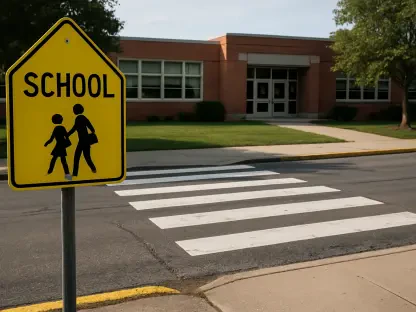The abrupt decision by the U.S. Department of Education to freeze over $25 million allocated to Monterey County K-12 schools has sent shockwaves through the education community. This funding is part of a larger sum of $6.2 billion that Congress set aside for K-12 education nationwide but has been withheld from distribution. This federal move has catalyzed a legal backlash, with California among the states embroiled in a multi-state lawsuit against this unprecedented action.
Impact of Withheld Federal Funds on Educational Programs
Disruption to Essential Educational Services
The withheld funds were earmarked for crucial programs within Monterey County, including support for migrant education and English language acquisition. Educational institutions counted on these resources to improve the quality of learning and tackle challenges faced by vulnerable student populations. Migrant education programs, for instance, are critical in maintaining educational continuity for children whose families relocate frequently for work. These programs offer consistent educational support, such as tutoring and tailored summer schooling, which are indispensable in mitigating disruptions in students’ learning journeys.
Beyond migrant education, the funding was also intended for after-school programs, which provide safe environments for students and alleviate the childcare burden on working parents. By losing access to such programs, families, especially those economically disadvantaged, face increased challenges. The suspension of funds further complicates the ability of school districts to maintain employment for teachers and staff associated with these educational services. Thus, the financial freeze not only threatens educational outcomes but also the job security of many educators within the system.
Administrative and Budgetary Challenges
For school administrators in Monterey County, the timing of the funding freeze has intensified difficulties in adhering to fiscal plans approved before the start of the academic year. Schools had already engaged in extensive planning and community consultations to finalize budgets by June 30, only to face unexpected financial roadblocks just before the fund’s release. This abrupt change left administrators scrambling to identify alternatives and make quick adjustments in the absence of promised federal support.
The budgetary impasse has forced some schools to reconsider their commitments to programs and staffing decisions made in reliance on expected funds. This situation underscores the precariousness of educational financing, heavily reliant on stable federal assistance. It also raises alarms about the potential need for cutbacks in areas that directly impact student learning and community well-being. The unpredictability generated by such federal decisions serves as a stark reminder of the volatile nature of educational funding landscapes.
Local Response and Community Support
Proactive Measures by School Leaders
In the face of this unexpected challenge, local leaders in Monterey County have rallied to mitigate the impact of the funding freeze. Superintendent Rebeca Andrade of Salinas City Elementary School District has committed to securing funding for all positions supported by federal grants. This proactive measure ensures that key educational roles remain filled, preserving the continuity of learning experiences for students. By finding alternate sources of funds or temporarily reallocating resources, school leaders exemplify a strong resolve to protect their educational infrastructure.
Similarly, Zandra Jo Galván of Salinas Union High School District has vowed to enlist community engagement and support to counter the financial gap created by the federal decision. By motivating local stakeholders, she highlights the community’s role in sustaining education amidst adversity. These efforts reflect an unwavering determination among school officials to safeguard the interests of students and educators, despite federal constraints. This collective resilience is instrumental in navigating the challenging landscape posed by financial uncertainties.
Ongoing Monitoring and Transparency
School districts are not just focusing on immediate solutions but also maintaining vigilance over developments concerning the funding issue. The Alisal Union School District, under Superintendent Monica Anzo, continues to prioritize transparency and the quality of education the district provides. By closely monitoring the evolving situation, they aim to keep all stakeholders informed and involved, ensuring that upcoming developments are managed effectively. This approach elucidates the importance of communication and collaboration when dealing with crises that affect educational ecosystems.
The districts’ commitment to openness and inclusivity in managing financial constraints sets a precedent for robust community engagement. By sustaining transparent dialogues with parents, educators, and students, the districts foster trust and collective problem-solving during periods of uncertainty. Such a strategic stance underscores the crucial nature of community partnerships in bridging gaps created by financial shortfalls, promoting educational stability in uncertain times.
Strategic Resilience of Monterey County Schools
The sudden decision by the U.S. Department of Education to suspend over $25 million designated for K-12 schools in Monterey County has caused widespread concern and turmoil throughout the education sector. This amount is only a small piece of a much larger $6.2 billion fund that Congress had earmarked for K-12 education across the nation, yet it has been held back from being distributed. The federal government’s action has prompted a strong legal reaction, with California joining other states in a comprehensive multi-state lawsuit challenging this unexpected decision. Educators, parents, and policymakers fear the negative impact this funding freeze could have on educational resources and opportunities for students in the region. They argue that these withheld funds are essential for maintaining quality education and supporting essential programs. Many see this legal battle as not just about money, but about ensuring educational equity and upholding commitments made to schools and communities.









